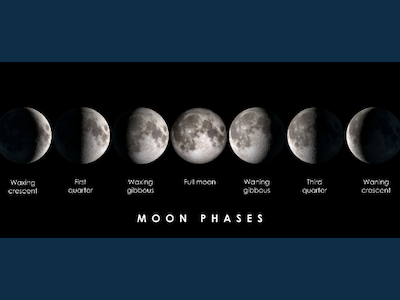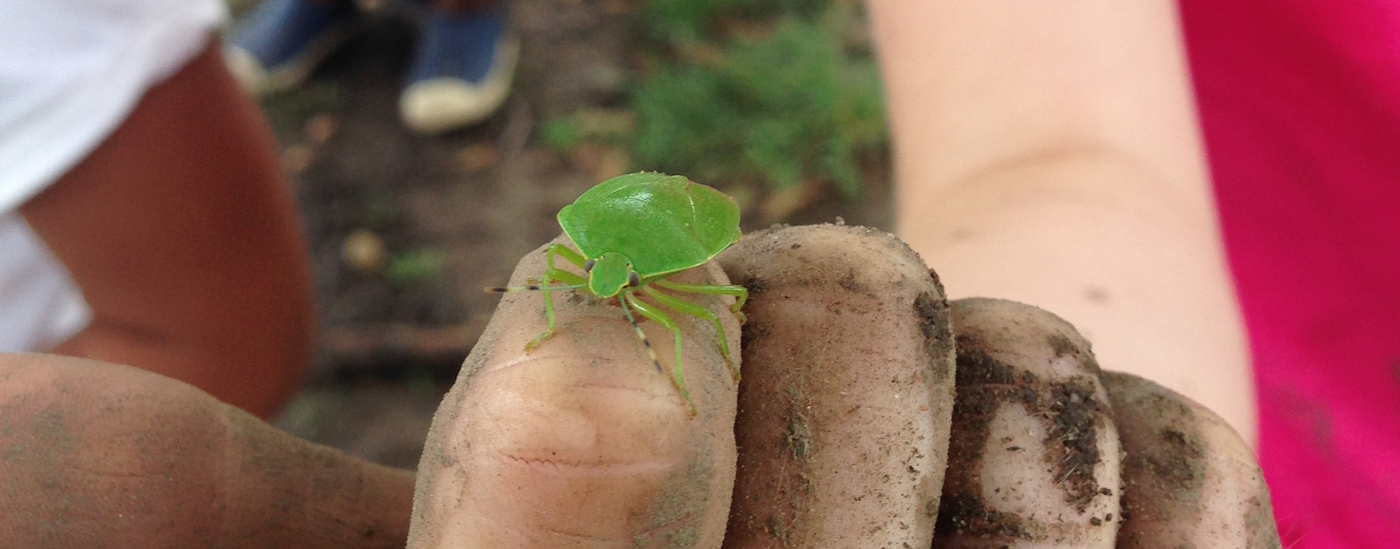Welcome the New Moon
-
Age: 3 to 8+
-
Time: Under 1 hour
-
Materials: None
- Skills: Curiosity, Focus & Self Control, Making Connections
We love celebrating each full moon together as a community — carefully anticipating the moment of peak illumination and getting extra excited to see if each new full moon comes with a special name, color or even the distinction of "supermoon."
This year, we’ve also welcomed the opportunity to slow down and savor the other end of the moon's amazing series of phases, too —the new moon. People have been noting and celebrating the new moon for centuries, and this fresh start moment is worthy of its own fanfare.
As part of our monthly Calendar of activities, we share these ways to get in tune with this month's new moon.
The Guide
Enjoy a Cosmic Reset:
A new moon is a time of fresh starts. Take the moment to make new intentions, either yourself or as a family. Fill a jar, hat, or box with ideas for brand new things you'd like to try, learn about, or experience as a family.
A new moon is a time of fresh starts. Take the moment to make new intentions, either yourself or as a family. Fill a jar, hat, or box with ideas for brand new things you'd like to try, learn about, or experience as a family.
Or, wonder to yourself, what is a project you'd like to start or a new habit you'd like to form? Now is the time! And, you can let kids know you'll be trying something new right along with the brand new moon, just like people have done for ages!
Learn About This Moon:
Throughout time, various peoples indigenous to North America and different cultures around the world have assigned the various full moons special names. For example, the full moon that will peak right after the summer solstice on June 21st is named the Strawberry Moon. The name "Strawberry Moon" emerged because strawberries are being harvested in much of North America under this moon, and this name has been used by Algonquin, Ojibwe, Dakota, and Lakota peoples, among others, to celebrate the arrival of strawberry season each year!
Our friends in the Southern Hemisphere, however, are approaching the winter solstice. The traditional Māori name for the upcoming lunar month is Hongonui, which describes the time when "Man is now extremely cold and kindles fires." There are so many names and celebrations for each full moon and I like this list for the range of cultures, names, and folklore it includes.
Sense the World Around You:
Slow down to notice the world around you. The new moon invites us to slow down and reflect on the changes we see in our world. Talk about the new moon this week and go on a noticing walk with kids in your yard, neighborhood, or local park. Notice the colors, the smells, the creatures that share these spaces, and the sounds you hear. Welcome older kids to build a photo slideshow or create art to capture things that are changing in your biome.
Behold the Sight:
Full moons have a humbling, awesome beauty, but the tiny sliver of a new moon is gorgeous in its own delicate, almost-can't-believe-it sort of way. Be sure to behold it and wonder how it makes you feel and what it reminds you of.

Watch the Moon Grow:
Then, make a habit of watching each night to see how it grows, waxing its way a bit more each day. This June's Strawberry Moon will become full and reach its peak illumination on June 21st. Compare the moon each day to the image below. Where does the moon belong in the chart? Watching how the moon changes is pure celestial magic!

Why is this activity great for kids?
The new moon is a monthly invitation to slow down, look up, and really connect the wonder of that glowing rock in space with the changes we see in the world around us.


